- Author: Anne Schellman
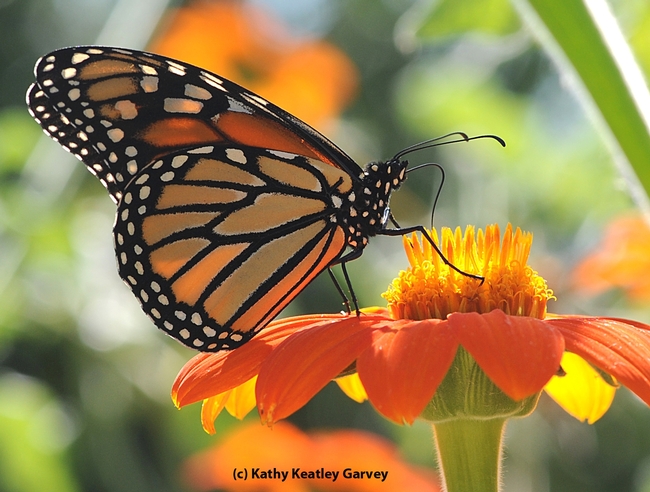
Date: Tuesday, December 20, 2022
Time: 9:00 am – 10:30 am.
Where: Online
Register: https://ucanr.edu/monarchs/2022/online
Link: you'll be sent a link to log in with before the class.
Registration will close Tuesday, Dec 20 at 8:00 a.m.
Can't tune in live? Watch the recording the following week on our YouTube Channel.
- Author: Anne Schellman
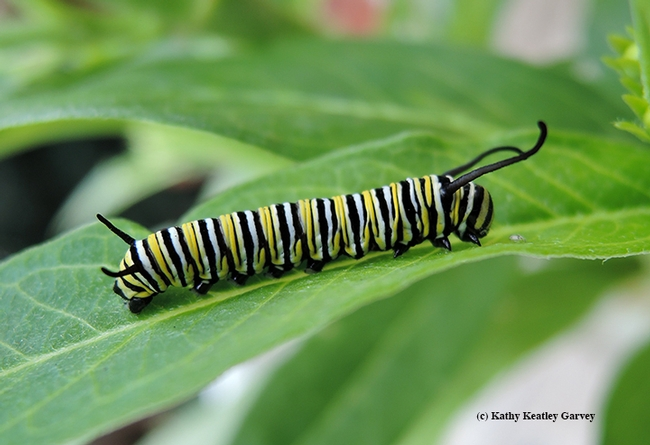
Thanks to donations from readers like you, our Pollinator Gardening project raised a total of $1,000. This amount will go towards our garden signage and pathway. We've sent out narrowleaf milkweed seed packets, which you should receive in the mail soon. Now is a great time to plant these seeds! As you've read, milkweed is the sole food source for monarch butterfly caterpillars. We are excited about the possibility of seeing these gorgeous yellow, black, and white caterpillars in our garden in the near future!
Next steps for the Pollinator Garden include adding mulch (next week!), planting more plants, and figuring out best ways to label the plants. Many of the native plants have their original name tags, so feel free to stop by. The garden is located on the west side of the Stanislaus Building at the Ag Center.
In the coming weeks we will add pollinator plants that are not native, but that have the same water requirements.
If you visit, don't let the lack of pathways stop you! Stroll right through and take a look. The plants are small now, but we expect spring blooms, and in another year they will have doubled in size. We will continue to update you on the progress of the garden
Missed Giving Tuesday but still want to give? You still can. Please make checks out to:
UC Regents and send to:
UCCE Stanislaus County Master Gardener Program
3800 Cornucopia Way, Ste A
Modesto, CA 95358
We still have plenty of milkweed seed packets left to send.
Thank you!
- Author: Denise Godbout-Avant
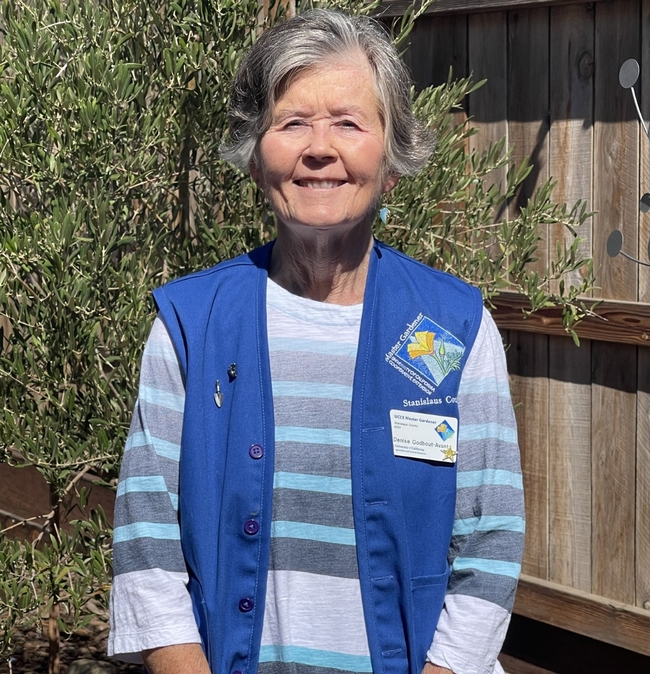
Fascinating Bat Bits
Bats are the only true flying mammal, making up a quarter of the world's mammals. There are 1,100 species of bats, with forty species in the USA. California has twenty-five species, most of which are insectivores.
Bats are one of only three mammals that generally sleep upside down, with sloths and manatees being the other two.
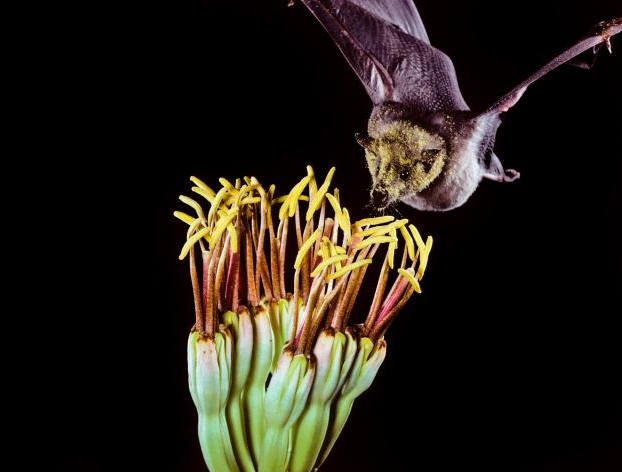
According to the U.S. Forest Service, fruit-eating bats are responsible for dispersing seeds that grow into bananas, avocados and 300 other plant species around the world. Agave plants (which are the source of tequila and mezcal) evolved to supply most of their nectar after dark to attract the nocturnal bats to cross-pollinate their flowers.
Insect eating bats often consume their own weight in insects each night, eating up to a thousand mosquito-size insects in an hour! It is estimated that bats' value to agriculture could exceed $23 million per year.
Bats are excellent fliers with some species flying up to 60-100 mph. They can locate and catch insects in midflight in total darkness, using echolocation, which is the ability to locate objects by reflected sound waves.
Where Do Bats Live?
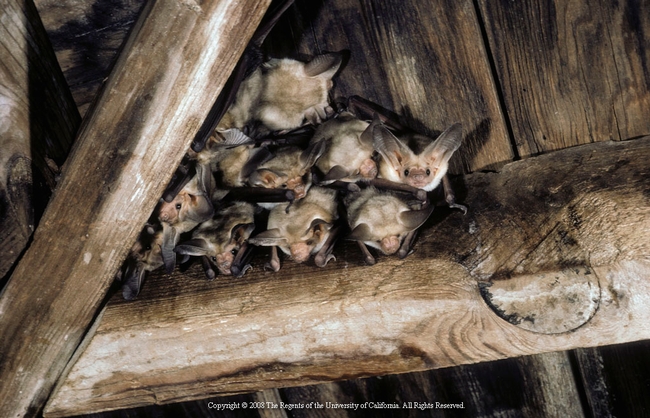
Usually, males and females with young will roost separately, but in late summer or early autumn, males may join the colony. In the winter when insects become scarce, some bats hibernate, while others may migrate to warmer areas, returning in the spring months.
Bat Myths and Facts
Because of their nocturnal habits, bats are rarely seen, so seem mysterious and are often misunderstood.
Myth - Bats suck people's blood.
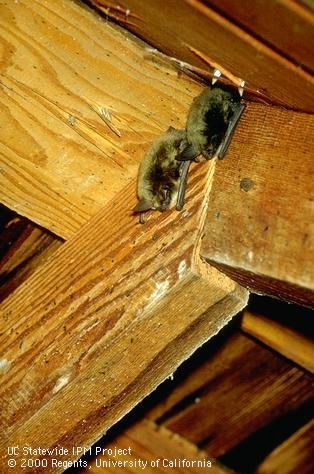
Myth - Bats are blind.
Fact - Bats do have small eyes, but they are functional. Megabats, which are larger bats such as fruit bats (found in forests of Africa, Asia, Australia, and Europe), search for their food using both sight and smell.
Myth - Bats fly towards and get tangled in people's hair.
Fact - Bats hang upside down from their roosts and tend to drop down and flap their wings before they start to lift off in flight. So, though it may appear the animals are swooping down on you and want to nest in your hair, they're not. In fact, bats don't make nests.
Bats as Pests
Like many mammals, bats can contract rabies. It is rare for a rabid bat to bite a human. According to the World Health Organization, an estimated 59,000 humans die from rabies each year, with 99% of these deaths being due to contact with rabid, unvaccinated dogs.
Most bat parasites such as fleas and mites are host specific and cannot survive on other animals. No evidence exists of disease transmission to humans or domestic pets from bat parasites.
Bat droppings, known as guano, can harbor a widespread fungus found in soil, Histoplasma capsulatum, which causes Histoplasmosis in humans. However, most human infections come from birds.
If You Find a Bat. . .
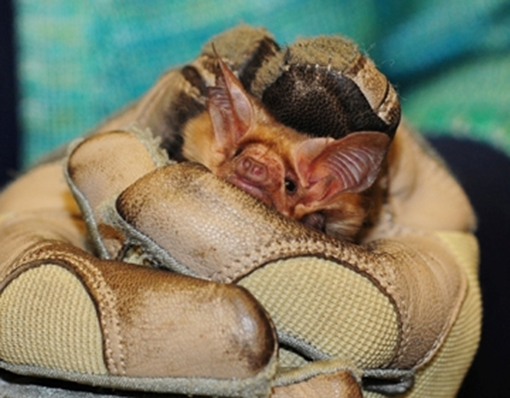
If you find a bat laying on the ground, please leave it alone, especially in the spring or fall, when they may be migrating and are just resting during their long journey. If after an hour or two, the bat has not moved, it is likely sick and should be avoided. If it is in an area where children or pets can access it, you may want to trap it. While wearing leather gloves, carefully put a box over it and slide a piece of cardboard underneath it to trap it. Then contact your local wildlife rescue organization (in Stanislaus County that is the Stanislaus Wildlife Care Center at 1220 Geer Rd., Hughson, 209-883-9414).
Bats in Trouble
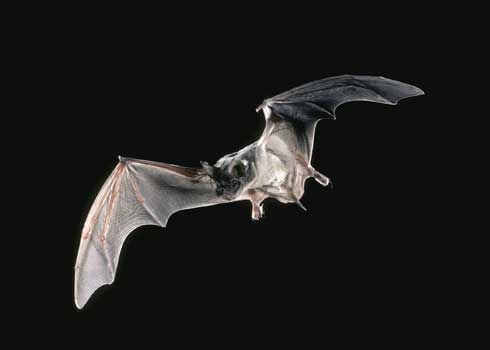
One of their most dire threats comes from white-nose syndrome (WNS), a disease that has decimated bats in the USA and Canada. Bats that hibernate during the winter do so to ration their energy and survive during a time of year when insects are scarce. The WNS fungus grows on bats' skin which disturbs their hibernation, thus increasing the amount of energy they are using, resulting in dehydration, starvation and often, death. However, a 2015 breakthrough appears promising. A team of researchers treated infected bats infected with a common bacterium on bananas which seems to stop the growth of the fungus. The treated bats were successfully released back to the wild.
How Can You Help Bats
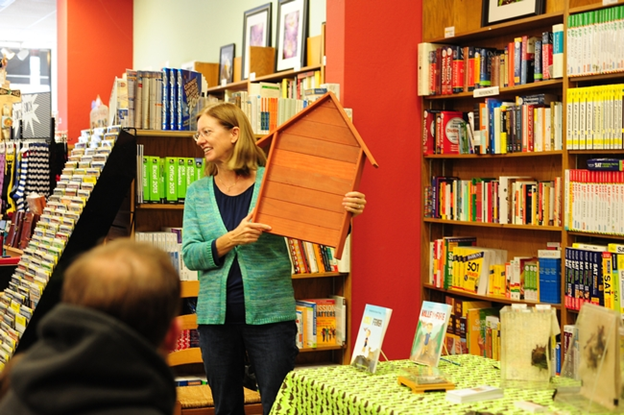
- Learn more about bats, educating friends and family.
- With an iNaturalist app on your smartphone, you can take part in citizen science by observing bats in a park or your own backyard.
- Build a bat house. Bats need places to roost, rest, raise young. UC IPM gives information how to build a backyard bat house: http://ipm.ucanr.edu/PMG/PESTNOTES/pn74150.html. Other bat house links are provided in Resources. Choose a pesticide-free open location with five to seven hours of sunlight. Bats prefer interior temperatures of 80-100ºF during the summer.
- Stay out of caves when directed. Bats need to be undisturbed in caves, particularly in the winter months. If you do visit caves where bats live, clean your shoes before and after to avoid tracking white nose syndrome to another cave.
Where to Go See Bats
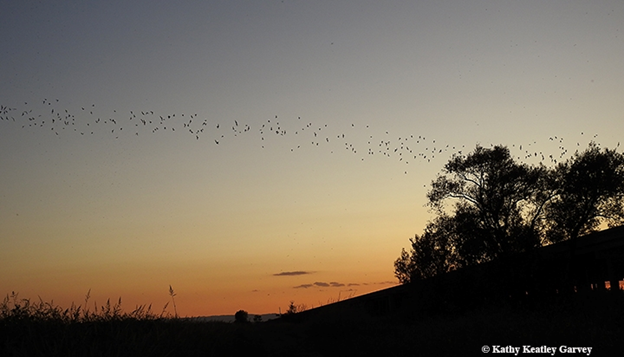
- Yolo Bypass Wildlife Area: Not far from Sacramento, this colony resides under the Yolo Causeways, a 3-mile-viaduct on Interstate 80. These are Mexican Free-tailed bats (Tadarida brasiliensis) who take up residence in the crevices in the concrete bridge. The colony numbers up to a quarter-million bats in size. If you want to see the bats yourself, you can find a place with a good view, but you can also book tours that are specifically designed to get you close enough to see the colony. https://www.yolobasin.org/bats2022/
- Consumnes River Preserve: Near Lodi, several species of bats are found in both the riparian forest and in a bat-friendly bridge built over the Cosumnes River. https://www.nature.org/en-us/get-involved/how-to-help/places-we-protect/cosumnes-river/
All About Bats Webinar
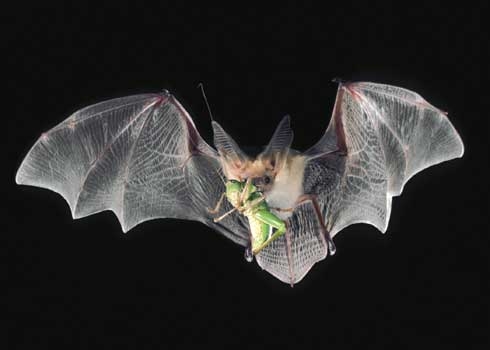
Webinar: “All About Bats”
Where: On Zoom
When: Wednesday, October 12, 2022, from 1:00-2:30 p.m
Instructor: Rachael Long, UC ANR Integrated Pest Management for Yolo, Solano and Sacramento Counties
Cost: Free
Register: https://ucanr.edu/all/about/bats
Resources
What Insects Do Bats Eat? https://ucanr.edu/blogs/bugsquad/index.cfm?tagname=bats
Bats, Allies to Farmers: https://ucanr.edu/blogs/blogcore/postdetail.cfm?postnum=23708&postnum=23708
Bats in the Belfry: https://ucanr.edu/blogs/blogcore/postdetail.cfm?postnum=17395
Fear of Bats and Its Consequences by Merlin Tuttle: https://secemu.org/wp-content/uploads/2018/05/Tuttle_et_al_2017.pdf
Bat Myths: https://kids.nationalgeographic.com/nature/article/bat-myths-busted
Myth Busters: https://www.nps.gov/subjects/bats/myth-busters.htm
Nature Conservancy – Bats: https://www.nature.org/en-us/get-involved/how-to-help/animals-we-protect/bats/
Bat Conservation and Management – Bats in Buildings:https://batmanagement.com/blogs/bat-exclusion-control/bats-in-buildings
White nose syndrome: https://blog.nature.org/science/2015/05/27/bananas-to-bats-the-science-behind-the-first-bats-successfully-treated-for-white-nose-syndrome/
All About Bat Houses: https://batmanagement.com/pages/lc-bh-overview
Selecting a Quality Bat House: https://www.merlintuttle.org/selecting-a-quality-bat-house/
- Author: Anne Schellman
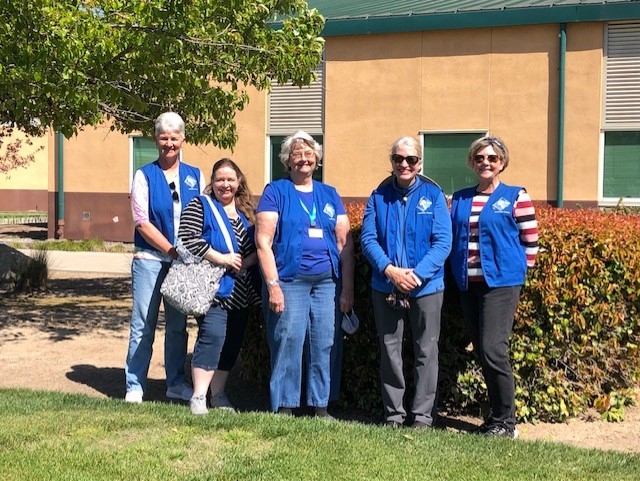
Locally, our program gives classes at libraries, community gardens, garden clubs, our Harvest Hall facility at the Ag Center, and to senior centers. We also help answer questions in person, online, and by phone. We are currently working on two gardens that will act as outdoor classrooms. You may remember that we raised funds for them last year. Here is an update on their progress.
The Sensory Garden
Our Master Gardener Sensory Garden Committee has been busy researching which plants to use for the garden, and creating a landscape plan that includes water-wise plants. Recently, we used part of the donated funds to remove some of the original plants in need of replacement. Next steps are amending the soil to prepare for the installation of the drip irrigation system. Thanks to Hunter Industries for donating irrigation supplies!
By the end of the summer, the soil will be amended, the drip irrigation installed, and this fall, we will begin planting. Grover Landscape Services Inc. has generously agreed to donate plants for this space. The remaining funds we have will be used for a water feature and a few benches, however it won't cover all of this cost. In addition, so we are looking for funding for hardscapes, mulch, and amendments for this garden.
The Pollinator Garden
This garden will not only showcase plants for pollinators, it will include a demonstration pollinator hedgerow. These hedgerows will demonstrate to farmers how they can help provide food for pollinators, while at the same time use hedgerows as visual screens and windbreaks.
Thanks to a generous donation from the West Stanislaus Resource Conservation District, we will have the funds to remove the turf in the area where we want to plant the garden. One of our Master Gardeners, Rhonda Allen, who created the La Loma Native Garden in Modesto, is creating the plan for this landscape. We plan to remove the turf in late summer, prepare the soil and irrigation, and be ready to plant in fall. Once we reach that step, we will work with Modesto Junior College Nursery to grow plants for this space. We are looking for funding for plants, hardscapes, mulch, and amendments for this garden.
Our Program
By donating to your local UCCE Master Gardener Program and UC ANR, you help extend the knowledge and resources of the University to your community.
Mark your calendar, spread the word, and stay tuned for more details! Join us at noon and be the first to give—or visit us anytime during the 24 hour giving day. Make your gift then share your support on social media using #Giving Day or call a friend to let them know what's happening. We hope you will join us on May 19-20!

- Wednesday, May 11, 2022 at 6:00 p.m. Vermicomposting - Riverbank Library
- Tuesday, May 17, 2022 at 6:00 p.m. Pollinators in Your Backyard - Oakdale Library
- Monday, May 23, 2022 at 6:15 p.m. Pests in Your Vegetable Garden - Modesto Library
Class Descriptions:
Attracting Native Pollinators to Your Backyard: Learn how to identify helpful native bees, wasps, bumble bees, flies, and other pollinators that live in your garden! We'll also teach you about which plants these pollinators prefer.
Pest Management in Vegetable Gardens: Wondering what chewed your plant or if your vegetable plant has a disease? Take this class to get better at identifying pests as well as beneficial insects, and learn about less toxic ways to manage pests.
Vermicomposting: Did you know some worms can help eat kitchen waste? See a "worm hotel" and learn more about these fascinating critters. Take home a list of instructions on how to create your own. Fun for the whole family!
Contact your local library branch to find out more. Missed a class you'd like to take? Look for it at another library branch in the future.

